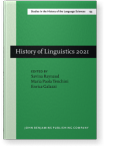Chapter 6
Eléments pour une histoire de l’interprétation
Considérations méthodologiques, enjeux et perspectives
L’interprétation a gagné en visibilité au cours du XXe siècle grâce à deux événements
historiques couramment mentionnés dans les Interpreting Studies : la Conférence de paix de Paris
(1919), où les interprètes consécutivistes jouent un rôle fondamental, et le procès de Nuremberg (1945–1946), où
l’interprétation simultanée s’impose à l’échelle internationale. Ces deux événements donneront
en effet à cette profession un prestige sans précédent. Au lendemain de la Seconde Guerre mondiale, avec la naissance
des écoles pour traducteurs et interprètes, la recherche sur l’interprétation prendra son essor : consacrée
essentiellement à l’interprétation de conférences, elle négligera toutefois, pendant longtemps, des modalités
d'interprétation différentes, considérées à tort comme « mineures », bien que plus anciennes et plus répandues. Depuis
quelques années, un nombre croissant de travaux s’attache à reconstruire l’histoire d’une
pratique langagière qui s’échelonne sur plusieurs millénaires. Initialement centrées sur l’Occident,
voire sur l’Europe, de plus en plus de recherches dépassent désormais ce cadre originel. Le présent article
examine ce tournant épistémologique dans l’historiographie de l’interprétation, les problèmes
méthodologiques qu’il implique, ses enjeux et ses perspectives.
Article outline
- 1.Introduction
- 2.D’une historiographie accessoire au renouveau des Interpreting studies
- 3.Une lecture foncièrement occidentocentrique
- 4.Réflexions et itinéraires méthodologiques
- 5.En guise de conclusion
-
Bibliographie
This content is being prepared for publication; it may be subject to changes.
Article language: French
